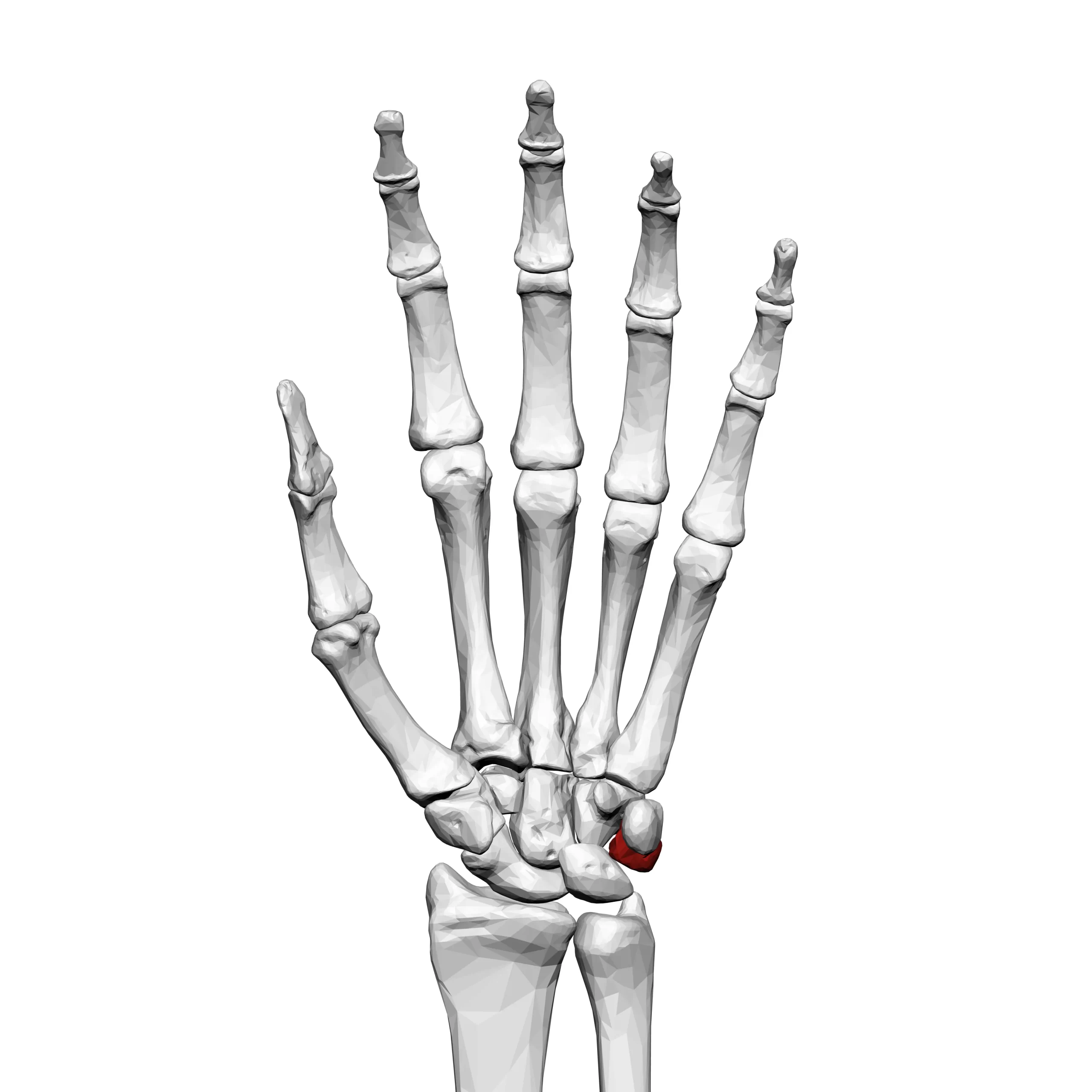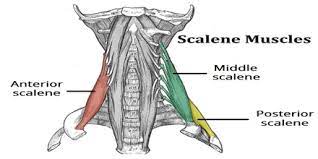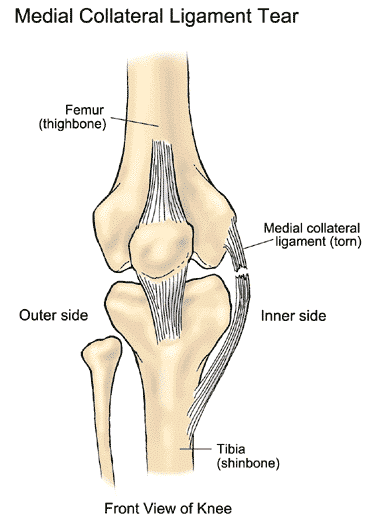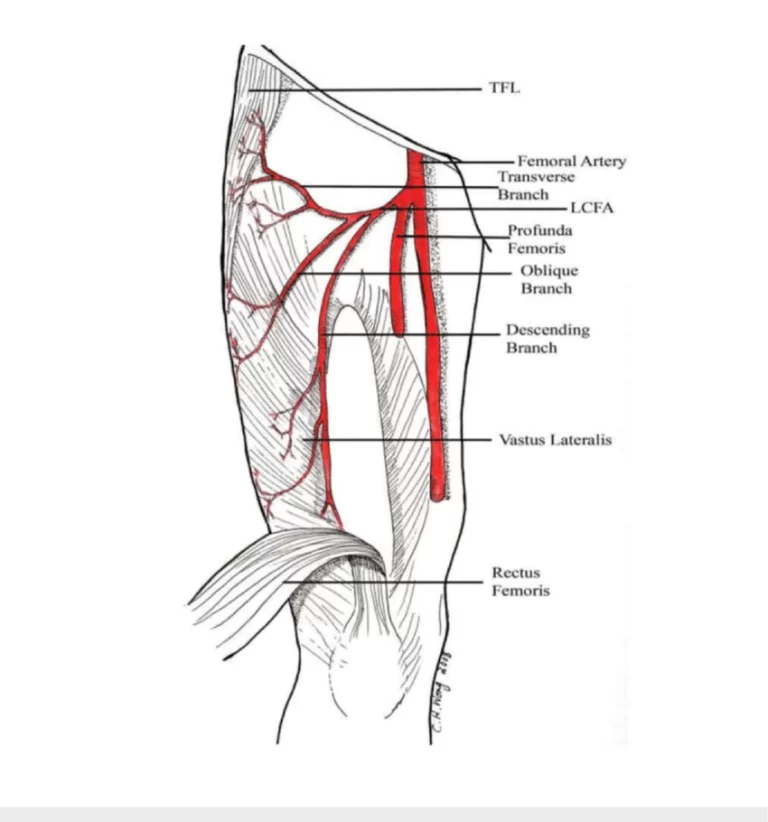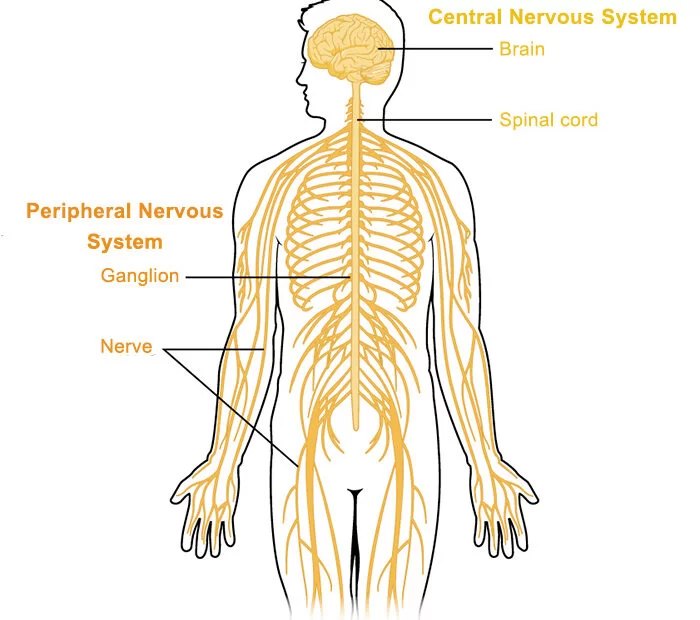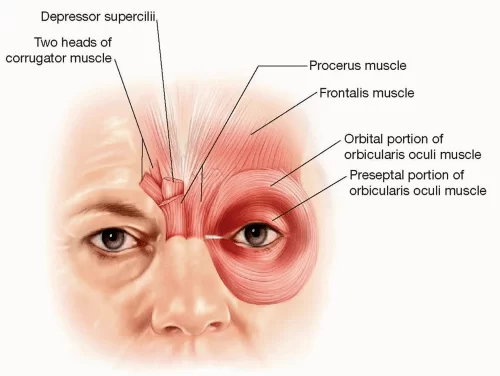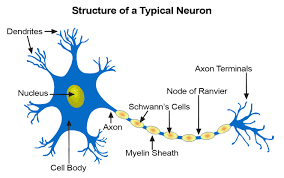Triquetrum Bone
Table of Contents
Introduction
The Triquetrum bone is one of the eight small carpal bones located in the wrist. It is a pyramid-shaped bone that articulates with the lunate, pisiform, and hamate bones. The triquetrum helps to stabilize the wrist joint and plays a role in wrist movement. It is also an attachment site for several ligaments and muscles. Injuries to the triquetrum can cause pain, swelling, and limited wrist motion. Treatment may include immobilization, rest, and physical therapy.
Anatomy of Triquetrum Bone
The triquetrum bone is a small, pyramid-shaped bone located in the wrist. It is involved in the eight carpal bones that create the wrist joint. The triquetrum bone is situated on the ulnar (little finger) side of the wrist, between the lunate and hamate bones.
The triquetrum bone has several anatomical features that contribute to its function. The bone has a proximal (upper) surface that articulates with the lunate bone, forming part of the radiocarpal joint. The distal (lower) surface of the triquetrum articulates with the hamate bone, forming part of the midcarpal joint. The medial (inner) surface of the triquetrum is concave and smooth, providing an attachment site for ligaments and muscles.
The triquetrum bone also has several bony processes that serve as attachment sites for ligaments and muscles. The dorsal (back) surface of the triquetrum has a prominent ridge called the dorsal ridge, which serves as an attachment site for the dorsal radiocarpal ligament. The palmar (front) surface of the triquetrum has a small tubercle called the palmar tubercle, which serves as an attachment site for the ulnar collateral ligament of the wrist.
The triquetrum bone is also an attachment site for several muscles that help to move and stabilize the wrist joint. The extensor carpi ulnaris muscle attaches to the dorsal surface of the triquetrum, while the flexor carpi ulnaris muscle attaches to the palmar surface.
Injuries to the triquetrum bone can cause pain, swelling, and limited wrist motion. Fractures of the triquetrum bone are relatively rare but can occur from falls or other traumatic injuries. Treatment for triquetral fractures may involve rest, immobilization, and physical therapy to regain strength and range of motion in the wrist joint.
Articulation of Triquetrum Bone
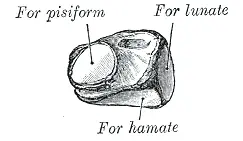
The triquetrum bone articulates with two other carpal bones, the lunate and hamate bones, to form two different joints in the wrist.
The proximal surface of the triquetrum bone articulates with the lunate bone to form part of the radiocarpal joint. This joint is located between the radius bone of the forearm and the first row of carpal bones in the wrist. The radiocarpal joint allows for flexion, extension, abduction, adduction, and circumduction of the wrist.
The distal surface of the triquetrum bone articulates with the hamate bone to form part of the midcarpal joint. This joint is located between the two rows of carpal bones in the wrist and allows for gliding and rotation movements of the wrist.
The articulation between the triquetrum and lunate bones is stabilized by several ligaments, including the dorsal radiocarpal ligament and the palmar radiocarpal ligament. These ligaments help to prevent excessive movement of the wrist joint and provide stability during activities such as gripping and lifting.
The articulation between the triquetrum and hamate bones is also stabilized by ligaments, including the ulnar collateral ligament of the wrist. This ligament helps to prevent excessive movement of the wrist joint in a medial direction (toward the little finger) and provides stability during activities such as throwing or swinging a racket.
Overall, the articulation of the triquetrum bone is important for maintaining proper wrist function and stability during a variety of activities.
Functions of the Triquetrum Bone
Despite its small size, it plays an important role in the overall function and stability of the wrist. Here are some of the key functions of the triquetrum bone:
- Articulation: As mentioned earlier, the triquetrum bone articulates with two other carpal bones – the lunate and hamate bones – to form two different joints in the wrist. These joints allow for a various range of motions, involving flexion, extension, abduction, adduction, and circumduction of the wrist.
- Stability: The ligaments that connect the triquetrum bone to other bones in the wrist help to provide stability during movement. For example, the ulnar collateral ligament of the wrist helps to prevent excessive movement of the wrist joint in a medial direction (toward the little finger) during activities such as throwing or swinging a racket.
- Force transmission: The triquetrum bone also plays a role in transmitting forces from the forearm to the hand. When you grip or lift something, for example, forces are transmitted through the wrist joint and into the hand. The triquetrum bone helps to distribute these forces evenly across the wrist joint, reducing the risk of injury.
- Shock absorption: The triquetrum bone is also involved in absorbing shock during activities such as jumping or running. When you land on your feet, for example, the impact is absorbed by the bones and joints in your legs and feet. The triquetrum bone helps to distribute this shock across the wrist joint, reducing the risk of injury.
- Muscle attachment: Finally, several muscles attach to the triquetrum bone, including the extensor carpi ulnaris muscle and the flexor carpi ulnaris muscle. These muscles help to control the movement of the wrist and hand and play an important role in activities such as typing, playing a musical instrument, or using hand tools.
In conclusion, the triquetrum bone is a small but important bone in the wrist joint. It plays a role in articulation, stability, force transmission, shock absorption, and muscle attachment, all of which are essential for proper wrist function and overall hand and arm movement.
Muscle attachment of Triquetrum Bone
The triquetrum bone serves as an attachment site for several muscles that are involved in wrist and hand movement. These muscles include the extensor carpi ulnaris muscle and the flexor carpi ulnaris muscle.
The extensor carpi ulnaris muscle originates from the lateral epicondyle of the humerus, the posterior border of the ulna bone, and the interosseous membrane. It inserts onto the base of the fifth metacarpal bone and the dorsal surface of the triquetrum bone. When contracted, this muscle extends the wrist joint and abducts the hand (moves it toward the little finger).
The flexor carpi ulnaris muscle originates from the medial epicondyle of the humerus, the olecranon process of the ulna bone, and the posterior border of the radius bone. It inserts onto the pisiform bone, the hook of the hamate bone, and the palmar surface of the triquetrum bone. When contracted, this muscle flexes the wrist joint and adducts the hand (moves it toward the thumb).
Other muscles that attach to the triquetrum bone include the extensor digiti minimi muscle, which extends the little finger, and the extensor carpi radialis brevis muscle, which extends and abducts the wrist joint.
Overall, these muscle attachments play a very crucial role in controlling the motions of the wrist and hand, allowing us to perform a various range of activities such as typing, playing sports, and using tools.
Ligament attachment of Triquetrum Bone
The triquetrum bone is a small bone located in the wrist joint, and it is attached to several ligaments that help to stabilize the joint. Ligaments are strong bands of connective tissue that connect bones to other bones, providing support and stability to the joint.
One of the main ligaments that attaches to the triquetrum bone is the triquetrohamate ligament. This ligament connects the triquetrum bone to the hamate bone, which is located near the base of the little finger. The triquetrohamate ligament helps to stabilize the wrist joint and prevent excessive movement between the triquetrum and hamate bones.
Another ligament that attaches to the triquetrum bone is the ulnotriquetral ligament. This ligament connects the ulna bone (one of the two bones in the forearm) to the triquetrum bone. The ulnotriquetral ligament helps to stabilize the ulnar side of the wrist joint, preventing excessive movement between the ulna bone and the triquetrum bone.
The dorsal radiocarpal ligament also attaches to the triquetrum bone. This ligament connects the radius bone (the other bone in the forearm) to the carpal bones of the wrist, including the triquetrum. The dorsal radiocarpal ligament helps to stabilize the back of the wrist joint, preventing excessive movement between the radius bone and the carpal bones.
Finally, the pisotriquetral ligament attaches the pisiform bone (a small bone located near the base of the little finger) to the triquetrum bone. This ligament helps to stabilize the pisiform bone and prevent excessive movement between it and the triquetrum bone.
Overall, these ligaments play a crucial role in stabilizing the wrist joint and allowing for smooth and controlled motion of the hand and wrist.
Conditions that affect Triquetrum Bone
Some of the associated conditions of the triquetrum bone include:
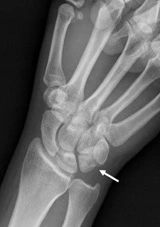
- Triquetral fracture: This is a common injury that occurs when there is a direct blow to the wrist or a fall on an outstretched hand. Symptoms may involve pain, swelling, and difficulty in the wrist movement.
- Triquetral dislocation: This occurs when the triquetrum bone becomes displaced from its normal position within the wrist joint. Symptoms may include severe pain, swelling, and deformity of the wrist.
- Triquetral ligament injuries: The triquetral bone is held in place by several ligaments, which can become stretched or torn due to trauma or overuse. Symptoms may include pain, instability, and weakness in the wrist.
- Kienbock’s disease: This is a rare condition that occurs when the blood supply to the lunate bone (which is adjacent to the triquetrum) is disrupted, leading to bone death and degeneration. Symptoms may include pain, stiffness, and limited range of motion in the wrist.
- Arthritis: Osteoarthritis and rheumatoid arthritis can affect the wrist joint, including the triquetrum bone. Symptoms may include pain, stiffness, and swelling in the wrist.
Overall, it may be said, associated conditions of the triquetrum bone can range from acute injuries like fractures and dislocations to chronic conditions like arthritis and Kienbock’s disease. Depending on the exact issue, there are several treatment options available, such as rest, immobilization, physical therapy, and surgery.
Rehabilitation
The rehabilitation of the triquetrum bone typically entails a comprehensive approach aimed at promoting healing, reducing pain, restoring function, and preventing further injury.
- Medical Evaluation: Before initiating any rehabilitation program, it is crucial to undergo a medical evaluation to assess the extent of the triquetrum bone injury and determine any associated factors that may impact the rehabilitation process.
- Immobilization: Depending on the severity of the injury, the initial phase of rehabilitation may involve immobilization of the wrist and hand using a splint, brace, or cast. This immobilization helps protect the injured area, promote stability, and facilitate initial healing.
- Pain Management: In the early stages of rehabilitation, pain management is essential. It can involve the use of pain medications, cold therapy (ice packs or cryotherapy), and techniques such as electrotherapy or ultrasound to alleviate pain and inflammation.
- Range of Motion Exercises: As the healing progresses and the pain subsides, range of motion exercises are introduced. These exercises aim to restore the normal movement of the wrist and hand, focusing on gentle stretching and bending exercises. A physical therapist or occupational therapist can guide and customize the exercise program according to individual needs.
- Strengthening Exercises: Once sufficient range of motion is achieved, strength-building exercises become important. These exercises target the muscles and tendons surrounding the triquetrum bone to regain strength and stability. The exercises may involve the use of resistance bands, hand weights, or specific rehabilitation equipment.
- Functional Training: Rehabilitation also includes functional training, which involves activities and exercises that mimic daily tasks and movements to promote the integration of the triquetrum bone into regular activities. This phase focuses on enhancing grip strength, coordination, and overall hand function.
- Proprioception and Balance Exercises: Rehabilitating the triquetrum bone also entails improving proprioception (awareness of joint position) and balance. This can involve various exercises that challenge stability and proprioceptive feedback, such as balancing on different surfaces or performing specific hand-eye coordination tasks.
- Gradual Return to Activities: Once strength, range of motion, and functional abilities are restored, the rehabilitation program should include a gradual return to specific activities or sports that involve wrist and hand movements. The timeline for returning to these activities will depend on individual progress and the guidance of the healthcare professional.
Throughout the rehabilitation process, it is crucial to follow the guidance of medical professionals, adhere to prescribed exercises and activity modifications, and report any unusual symptoms or setbacks. Rehabilitation duration can vary depending on the severity of the triquetrum bone injury and individual factors, and it may require several weeks to months to achieve optimal recovery.
FAQs
Triquetral fractures, ligament injuries, and arthritis are common injuries or conditions that affect the triquetrum bone.
Ligament injuries to the triquetrum bone occur when the ligaments that connect the bone to other bones in the wrist are stretched or torn, causing pain, swelling, and reduced mobility.
Treatment for ligament injuries to the triquetrum bone may include immobilization of the wrist with a cast or splint, as well as physical therapy to improve the range of motion and strength in the wrist and hand. In several conditions, surgery may be needed to repair or reconstruct damaged ligaments.
Arthritis of the triquetrum bone occurs when the cartilage that cushions the joint between the triquetrum bone and other bones in the wrist breaks down, causing pain, stiffness, and reduced mobility.
Treatment for arthritis of the triquetrum bone may include physical therapy to improve joint mobility and strength, as well as medications to manage pain and inflammation. In several conditions, surgery may be needed to repair or reconstruct damaged ligaments.

